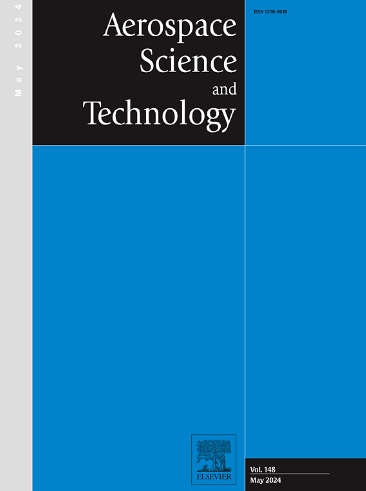Comparative analysis of flow field and thrust behaviour of plug nozzles in continuum vs. rarefied conditions
IF 5
1区 工程技术
Q1 ENGINEERING, AEROSPACE
引用次数: 0
Abstract
Plug nozzle of a single-stage-to-orbit launch vehicle moves through continuum to rarefied regime, as it approaches high altitudes. Despite multiple studies on plug nozzle flows in the rarefied regime, there is significantly less work that compares continuum and rarefied flows through plug nozzles. Even the works that conducted such comparative analysis did not consider the effect of varying nozzle pressure ratios (NPR). The present work compares flow field and thrust performance of a plug nozzle in continuum and rarefied regimes over a range of NPR. In the continuum domain, the exhaust jet displays typical characteristics such as shocks, expansion fans and flow separation. However, the influence of viscosity becomes more noticeable in the rarefied regime. Furthermore, some consequences of flow expanding outside the boundaries of the nozzle walls are noted. The nozzle thrust coefficients exhibit a comparable pattern in both the continuum and rarefied regimes, but noticeable disparities in magnitude are seen. The significant disparity in the thrust coefficients can be attributed to two factors: low mass flow rates and elevated frictional losses. In an effort to eliminate the impact of low mass flow rates, the computed specific impulse values provide insight into the effect of frictional losses on thrust performance of a plug nozzle operating in a rarefied domain.
求助全文
约1分钟内获得全文
求助全文
来源期刊

Aerospace Science and Technology
工程技术-工程:宇航
CiteScore
10.30
自引率
28.60%
发文量
654
审稿时长
54 days
期刊介绍:
Aerospace Science and Technology publishes articles of outstanding scientific quality. Each article is reviewed by two referees. The journal welcomes papers from a wide range of countries. This journal publishes original papers, review articles and short communications related to all fields of aerospace research, fundamental and applied, potential applications of which are clearly related to:
• The design and the manufacture of aircraft, helicopters, missiles, launchers and satellites
• The control of their environment
• The study of various systems they are involved in, as supports or as targets.
Authors are invited to submit papers on new advances in the following topics to aerospace applications:
• Fluid dynamics
• Energetics and propulsion
• Materials and structures
• Flight mechanics
• Navigation, guidance and control
• Acoustics
• Optics
• Electromagnetism and radar
• Signal and image processing
• Information processing
• Data fusion
• Decision aid
• Human behaviour
• Robotics and intelligent systems
• Complex system engineering.
Etc.
 求助内容:
求助内容: 应助结果提醒方式:
应助结果提醒方式:


